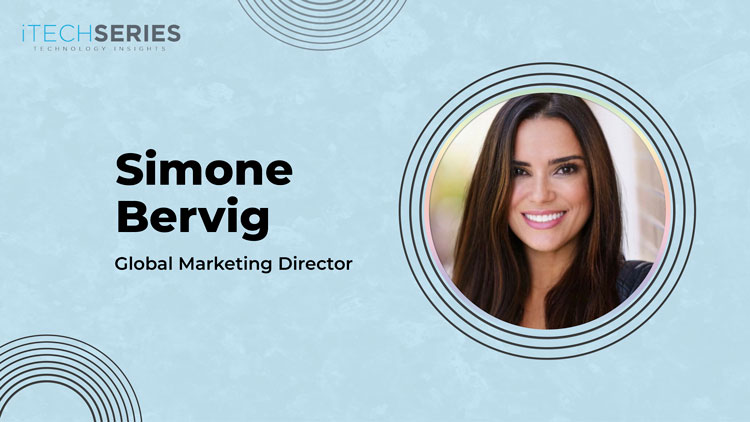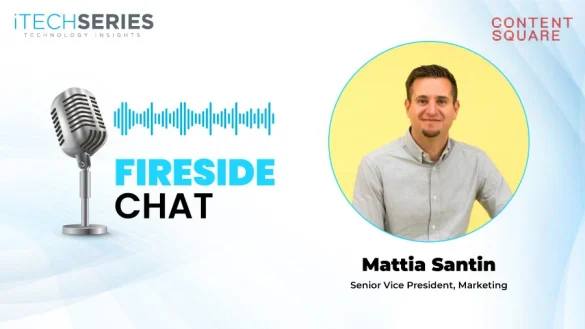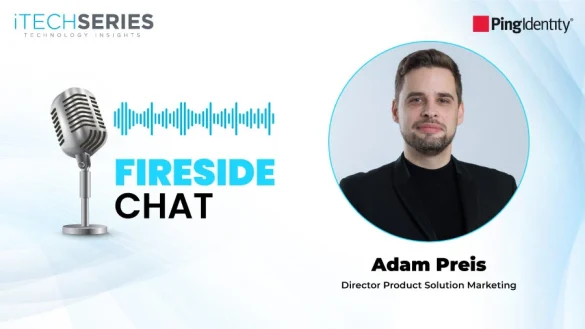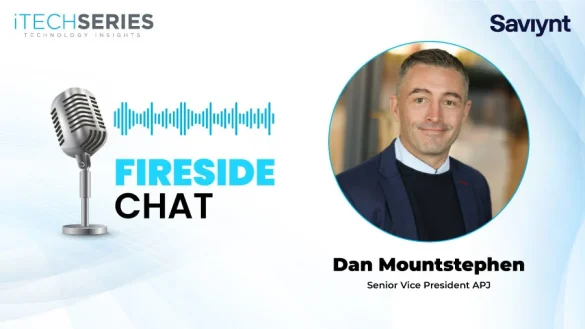Simone Bervig, a seasoned marketing leader, emphasizes the pivotal role of localization, collaboration, and market adaptability. She explores crafting impactful LATAM strategies, aligning global teams, driving effective marketing campaigns, and delivering measurable results across diverse marketplaces.
Simone, welcome to the interview series. Can you tell us about yourself and your journey as a go-to-market leader?
I am a Brazilian professional, based in São Paulo, with 18+ years of experience in B2B Tech companies with Go-To-Market strategies, Marketing, Branding, and Communication in the Brazilian, Latin American, and United States markets, working on European (French/German) and American global companies too, like Schneider Electric, SAS, Citrix, and SAP.
I am responsible for all Go-To-Market strategies for LATAM, working with global and regional teams to ensure our GTM strategies and executions are appropriate for our marketplaces in LATAM. This includes development, planning, localization, execution, and performance analysis of marketing campaigns with cross-functional global teams to ensure we are driving feature parity across marketplaces and advocating for and delivering on needs that are specific to our marketplaces in LATAM. Additionally, working with global teams in the US, EMEA, and APAC to understand how products and features are used and develop plans to support their growth post-launch.
How do you foster collaboration between sales, product, and customer success teams to ensure alignment between marketing goals and business outcomes?
There are many ways to enable this kind of collaboration, but I find that creating a process around it helps streamline the efforts. This can be accomplished by creating a workflow to submit feedback/ideas/requests with various teams in combination with a forum where the feedback can be openly discussed to identify deliverables. As an example, customers will often make feature requests for an enhancement to the product that helps them improve a specific use case. By working with product development teams, CSMs can drive innovation to the product roadmap that directly aligns with how their customers want to use it. Additionally, it’s important to define and share the goals and KPIs with all teams to help achieve the accomplishment.
What are some of the key components of a successful go-to-market and growth strategy for SMB versus enterprise audiences?
First of all, we need to deeply understand our audiences and market to deliver the right messaging and create a tailor-made strategy for each vertical that brings more ROI for each campaign and activity. SMBs have a sales cycle faster than enterprises, so it requires more activities to create pipelines and expand the installed base to cover the goals and find new customers.
On the other hand, enterprise strategies typically on a longer sales cycle and larger deal sizes. Key elements include identifying target industries, leveraging content marketing, building relationships through sales teams, and offering free trials or demos to showcase value. Enterprise clients often need custom solutions and robust support, making the sales process more personalized and consultative.
Can you share some GTM challenges and opportunities for the US and LATAM markets?
The Latin American market represents a compelling opportunity for companies seeking to expand their global footprint. Cultural diversity is a hallmark of Latin America, and it’s essential to adapt your marketing and business strategies accordingly. Localization goes beyond language translation; it involves tailoring your messaging, product packaging, and promotional campaigns to resonate with each country’s cultural norms and values. Embrace the local customs and traditions to establish a deeper connection with your target audience. Latin America is a region of diverse cultures, languages, and customs. What works in one country may not resonate in another. Adapting marketing strategies and understanding local preferences is crucial for successful market penetration. Adapting to the local culture is critical for success.
A local partner can help bridge the cultural gap by providing insights into consumer behavior, preferences, and effective communication strategies. Each Latin American country has its unique regulatory environment and legal requirements. Engage legal experts, if needed, familiar with the region to guide you through the process of setting up a business, obtaining necessary permits, and adhering to local laws. Ignorance of local regulations can lead to costly mistakes and hinder market entry. Navigating the legal and regulatory landscape of a foreign market can be complex and time-consuming. A local partner with in-depth knowledge of the local laws and regulations can help a company comply with the necessary requirements, avoiding potential pitfalls and delays. Some countries in Latin America experience political and economic instability, which can impact business operations. Changes in government policies or economic downturns may affect market conditions and consumer behavior.
“Localization goes beyond language translation; it involves tailoring messaging, product packaging, and promotional campaigns to resonate with each country’s cultural norms and values.”
The US market has these key aspects: Economic pressures: how inflation and economic uncertainty are affecting consumer behavior and strategies. Consumers are more selective about their spending, leading to a focus on maximizing the value of existing technology and resources. Innovation versus optimization: While new technologies and innovations like AI and headless commerce are popular, it’s important to optimize current systems and understand what your consumers truly need before investing in new solutions. Consumer behavior: how consumers are adjusting their spending habits, emphasizing the need to adapt their strategies to meet these evolving expectations. Strategic audits: To succeed in the competitive US market, I recommend conducting audits to evaluate site performance, customer experience, and technology use. Incremental improvements and focusing on core customer needs can drive significant results without major investments. By balancing innovation with practical, customer-focused strategies, brands will be better positioned to thrive in the dynamic US market.
How do you leverage thought leadership programs as part of a successful go-to-market strategy?
With the right go-to-market strategy, thought leadership can build credibility for the brand and its leaders by establishing them as experts in not only their field but on the pain points they help their customers overcome. In turn, this content can enhance customer relationships, generate demand, and spark new opportunities for sales.
Define your goals- The best thought leadership strategies align with the business strategy. Do you need to establish credibility in a new market? Educate the market on the problem you solve. Promote innovation to attract investment. Only when you understand what you need to achieve can you start on how you will do it.
Understand your personas- Have you ever read or watched a piece of content and felt like it really speaks to you? That is the goal of thought leadership, and just because it is typically available to a general audience, that doesn’t mean it should be created for one. After all, the message you want to land with a C-level executive will typically be very different from the technology user. Identify your key personas, then how and where you can best engage them.
Listen to the market- Your business doesn’t operate in a vacuum – and neither can your thought leadership. You are not only competing for airtime with your direct competitors but also those with an equal claim to the challenges your customers want to overcome. Map out who the dominant voices are, what topics they are engaging with, and what their opinions are. This will help you understand what your opportunity space is in the market. Don’t be afraid to quote other experts and link to their work–this will all help with the pick-up of your content.
Have a point of view- You can’t be a master of every topic. But based on your goals, target personas, and market opportunity, by now you should have a good idea of those you want to have a voice on. The next step is to determine what your point of view is on that topic. Host messaging sessions with key stakeholders across the organization to create the narratives–and don’t forget to have opinions! Your audience won’t engage with old ideas just because a new person is saying it. So, make sure you are bringing something new to the table.
It’s not just what, but how you say It’s not enough to have something good to say if no one hears it. So, the final step of any thought leadership strategy is working out how best to take it to market. What publications are your customers reading? What podcasts are your investors listening to? What influencers are your talent watching? Then work out the best ways to meet your audience there.
Tell us about your most challenging yet successful marketing campaign leadership experience.
I created a regional marketing campaign for Latin America, about Customer Experience, for the relaunch of the product. In the beginning, it was only to launch in Latin American countries this campaign through robust digital strategies, including DV360, content syndication, Ads, and many others to bring more brand presence with this launch in the region. The results in the first month of this launch were so positive and amazing that it was the first time that the company globally launched a Latin America marketing campaign for all geos: EMEA, APAC, US, and Canada, with the local translation to all assets in over five languages. This campaign ran for almost three years globally.
How do you approach managing a marketing budget, and what metrics do you watch more closely than others?
According to the Gartner survey, which involved 410 CMOs and marketing leaders from North America and parts of Europe, the channels that require more budget allocation are social advertising, digital video advertising, influencer marketing, digital display advertising, and SEO. These channels are likely receiving more attention because they work better for reaching and engaging with customers online.
My first step is to set your marketing goals for the year. Marketing goals are usually a combination of short-term and long-term goals to drive sales and revenue for your business. The company business plan guides revenue goals, but it’s the marketing team’s responsibility to build the marketing plan and determine marketing budget allocation. The key to setting marketing goals is to make the goals specific and measurable.
Some key metrics to track include conversion rates, customer acquisition prices, and return on investment (ROI). Tracking engagement metrics like click-through rates and social media interactions can also provide useful insights into how your efforts are resonating with your audience. The main metrics that I put more effort into today are CTA, ROI, CTR, CAC, LTV, and CPL.
How do you keep customers engaged through lifecycle marketing, and what role does automation play in this process?
My mantra is Automate for consistency: Automated workflows keep your lifecycle marketing timely and consistent. Set up different processes for on-boarding and re-engagement to ensure customers don’t fall through. Focus on retention and engagement: Retaining customers is cheaper than acquiring new ones.
Following the initial awareness and conversion stages in the sales funnel, the engagement stage focuses on nurturing customers and building long-term loyalty through valuable interactions. This might involve offering educational content to help them maximize product benefits, building a community where they can connect with other users, or sending targeted recommendations based on their purchase history. This level of personalization fosters a sense of value and appreciation, keeping them engaged with your brand long after the initial sale. Lifecycle marketing thrives on data. It’s the fuel that allows you to tailor experiences to each customer and build fluid relationships. But your data is only useful if you have access to it.
Leveraging AI and automation can take all the data being generated and derive valuable intelligence and insights, like which customers may churn if you don’t act quickly or where you have opportunities to offer additional products or services. Automation helps ensure that no customer interaction slips through the cracks and that everyone receives the attention they need to drive engagement and loyalty. Combining these tools—advanced analytics, omnichannel automation, and intelligent AI—creates a powerful martech stack that can drive your lifecycle marketing strategy forward. By leveraging these solutions, you can gain a holistic understanding of your customers, engage them at the right moments, and foster long-term loyalty.
As a GTM leader, what is your approach towards leadership that keeps team members aligned and motivated?
I think these are possible approaches toward leadership that keep team members aligned and motivated:
- Foster open and honest communication
- Collaborative goals
- Celebrate their success
- Allow team members to problem solve
- Provide adequate resources and training
- Keep yourself accountable
- Keep your eye on the big picture
- Show empathy
- Build strong one-on-one relationships











